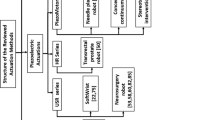Abstract
Ultrasonic motors (USMs) are common actuators that can be safely used in the magnetic resonance imaging (MRI) environment. However, lack of MRI compatibility results in issues such as image distortion. This fact led researchers to shift focus from USMs to pneumatic and hydraulic actuators in development of surgical robots. The aim is to quantify and compensate the geometric distortion of MR images as generated by the presence of USMs. An ultrasonic motor was positioned in three orientations with respect to the bore axis. The induced distortions were compared across four image sequences. To reduce the distortions, three artifact reduction methods were employed. Geometric distortion is the only artifact in image slices farther from the motor. The various motor orientations lead to different distortions, with the lowest distortion for the z orientation. The maximum measured distortion of ten pixels occurred. This maximal distortion is equal to a 1-cm displacement of the displayed points relative to their actual locations and it is beyond the acceptable level for medical display standards. Bandwidth reduction reduced the distortion, with a 50% reduction for a doubled bandwidth. In conclusion, USMs can be preferred alternative because accurate targeting of pathologies can occur in free distorted images.






Similar content being viewed by others
References
Elhawary H, Tse ZT, Hamed A, Rea M, Davies BL, Lamperth MU (2008) The case for MR-compatible robotics: a review of the state of the art. Int J Med Rob 4:105–113. doi:10.1002/rcs.192
Stoianovici D, Song D, Petrisor D, Ursu D, Mazilu D, Mutener M, Schar M, Patriciu A (2007) “MRI Stealth” robot for prostate interventions. Minim Invasive Ther Allied Technol 16:241–248. doi:10.1080/13645700701520735
Koseki Y, Washio T, Chinzei K, Iseki H (2002) Endoscope manipulator for trans-nasal neurosurgery, optimized for and compatible to vertical field open MRI. In: Dohi T, Kikinis R (eds) Medical image computing and computer-assisted intervention—MICCAI 2002. Springer Verlag, Berlin, pp 114–121
Cole GA, Harrington K, Su H, Camilo A, Pilitsis JG, Fischer GS (2014) Closed-loop actuated surgical system utilizing real-time in-situ MRI guidance. In: Khatib O, Kumar V, Sukhatme G (eds) Experimental robotics. Springer Verlag, Berlin, pp 785–798
Shokrollahi P, Drake JM, Goldenberg AA (2015) Comparing the effects of three MRI RF sequences on ultrasonic motors. In: Jaffray DA (ed) World Congress on Medical Physics and Biomedical Engineering, June 7–12, 2015, Toronto, Canada. Springer Verlag International Publishing, Toronto, pp 846–849
Tsekos NV, Khanicheh A, Christoforou E, Mavroidis C (2007) Magnetic resonance-compatible robotic and mechatronics systems for image-guided interventions and rehabilitation: a review study. Annu Rev Biomed Eng 9:351–387. doi:10.1146/annurev.bioeng.9.121806.160642
Tsekos NV, Shudy J, Yacoub E, Tsekos PV, Koutlas IG (2001) Development of a robotic device for MRI-guided interventions in the breast. Proceedings of the 2nd IEEE International Symposium on Bioinformatics and Bioengineering. IEEE, Bethesda, MD, USA, pp 201-208.
Kumada A (1985) A piezoelectric ultrasonic motor. Jpn J Appl Phys 24:739–741
Lüdeke KM, Röschmann P, Tischler R (1985) Susceptibility artefacts in NMR imaging. Magn Reson Imaging 3:329–343. doi:10.1016/0730-725X(85)90397-2
Samei E, Badano A, Chakraborty D, Compton K, Cornelius C, Corrigan K, Flynn MJ, Hemminger B, Hangiandreou N, Johnson J, Moxley-Stevens DM, Pavlicek W, Roehrig H, Rutz L, Shepard J, Uzenoff RA, Wang J, Willis CE, AAPM TG18 (2005) Assessment of display performance for medical imaging systems: executive summary of AAPM TG18 report. Med Phys 32:1205–1225
Wang Q, Desai VN, Ngo YZ, Cheng WC, Pfefer J (2013) Towards standardized assessment of endoscope optical performance: geometric distortion. Proceedings of the International Conference on Optical Instrument & Technology, Beijing, p 904205
Gholipour A, Kehtarnavaz N, Scherrer B, Warfield SK (2011) On the accuracy of unwarping techniques for the correction of susceptibility-induced geometric distortion in magnetic resonance Echo-planar images. Conf Proc IEEE Eng Med Biol Soc 2011:6997–7000
Dietrich O, Reiser MF, Schoenberg SO (2008) Artifacts in 3-T MRI: physical background and reduction strategies. Eur J Radiol 65:29–35. doi:10.1016/j.ejrad.2007.11.005
Hargreaves BA, Worters PW, Pauly KB, Pauly JM, Koch KM, Gold GE (2011) Metal-induced artifacts in MRI. AJR Am J Roentgenol 197:547–555. doi:10.2214/AJR.11.7364
Baldwin LN, Wachowicz K, Thomas SD, Rivest R, Fallone BG (2007) Characterization, prediction, and correction of geometric distortion in 3T MR images. Med Phys 34:388–399. doi:10.1118/1.2402331
Acknowledgments
This work was financially supported by NSERC CHRP Grant 385860-10 to A. A. Goldenberg. Additionally, we thank Adam Waspe for his support.
Author information
Authors and Affiliations
Corresponding author
Rights and permissions
About this article
Cite this article
Shokrollahi, P., Drake, J.M. & Goldenberg, A.A. Ultrasonic motor-induced geometric distortions in magnetic resonance images. Med Biol Eng Comput 56, 61–70 (2018). https://doi.org/10.1007/s11517-017-1665-3
Received:
Accepted:
Published:
Issue Date:
DOI: https://doi.org/10.1007/s11517-017-1665-3




